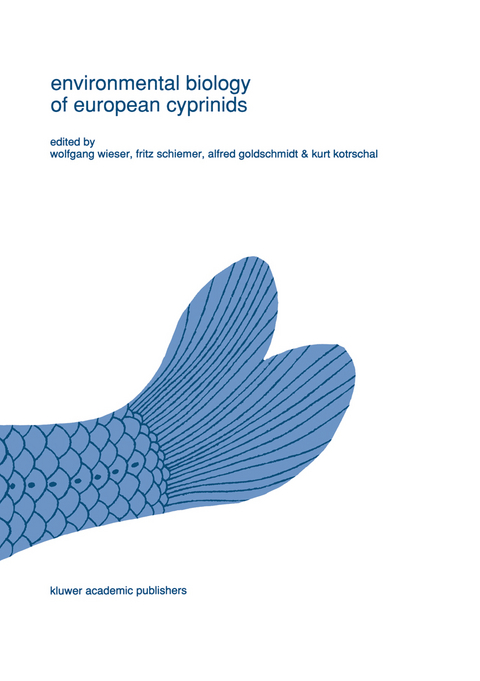
Environmental biology of European cyprinids
Springer (Verlag)
978-0-7923-1484-4 (ISBN)
Members of the family Cyprinidae dominate most of the aquatic habitats of Europe, from eutrophic warm water ponds to mountain lakes. The family comprises generalists and specialists, herbivorous, planktovorous and even one piscivorous species; slow-moving grazers as well as fast-swimming inhabitants of the pelagial of lakes. Due to their diversity and abundance, cyprinids play key roles in every ecosystem in which they occur. Being of little economic importance, however, the family has for the most part failed to arouse keen scientific interest. With the aim of drawing attention to this situation, and to encourage further research, a symposium was held in Salzburg, Austria. Experts from all fields of biology discussed ecological, morphological and physiological aspects of the lives of cyprinids. The publication of this collection of keynote contributions to the symposium documents the value of the comparative approach in biology.
The structural and functional patterns which emerge provide hints regarding the evolutionary processes underlying the diversification and specialization of a family which, from the ecological viewpoint, is one of the most important of the freshwater fish of the entire world.
to the environmental biology of European cyprinids.- Feeding behavior and ecophysiology.- A model for switching between particulate-feeding and filter-feeding in the common bream, Abramis brama.- Ontogeny of prey attack behaviour in larvae and juveniles of three European cyprinids.- Food consumption and growth of larvae and juveniles of three cyprinid species at different food levels.- Food searching decisions in four cyprinid species.- Functional responses by five cyprinid species to planktonic prey.- The energetics of starvation and growth after refeeding in juveniles of three cyprinid species.- Interactive effects of season and temperature on enzyme activities, tissue and whole animal respiration in roach, Rutilus rutilus.- Influence of temperature and ambient oxygen on the swimming energetics of cyprinid larvae and juveniles.- Ecomorphology.- Quantitative fine structural diversification of red and white muscle fibers in cyprinids.- Structure, development and function of the branchial sieve of the common bream, Abramis brama, white bream, Blicca bjoerkna and roach, Rutilus rutilus.- Density and distribution of external taste buds in cyprinids.- Neuroecology of cyprinids: comparative, quantitative histology reveals diverse brain patterns.- Brain morphology and turbidity preference in Notropis and related cyprinid genera (Cyprinidae, Teleostei).- Distribution and field biology.- How dams on the River Danube might have caused hybridization and influenced the appearance of a new cyprinid taxon.- Comparative microhabitat use of cyprinid larvae and juveniles in a lotic floodplain channel.- The role of predation and competition in determining the distribution of common bream, roach and white bream in Dutch eutrophic lakes.- Interactions between the roach, Rutilus rutilus and waterfowl populations of Lough Neagh, Northern Ireland.- Seasonal feeding activity and ontogenetic dietary shifts in crucian carp, Carassius carassius.- Epilogue: food and feeding, ecomorphology, and energy assimilation and conversion in cyprinids.- Species and subject index.
| Erscheint lt. Verlag | 30.11.1991 |
|---|---|
| Reihe/Serie | Developments in Environmental Biology of Fishes ; 13 |
| Zusatzinfo | 233 p. |
| Verlagsort | Dordrecht |
| Sprache | englisch |
| Maße | 210 x 297 mm |
| Themenwelt | Naturwissenschaften ► Biologie ► Evolution |
| Naturwissenschaften ► Biologie ► Ökologie / Naturschutz | |
| Naturwissenschaften ► Biologie ► Zoologie | |
| Weitere Fachgebiete ► Land- / Forstwirtschaft / Fischerei | |
| ISBN-10 | 0-7923-1484-0 / 0792314840 |
| ISBN-13 | 978-0-7923-1484-4 / 9780792314844 |
| Zustand | Neuware |
| Haben Sie eine Frage zum Produkt? |
aus dem Bereich


